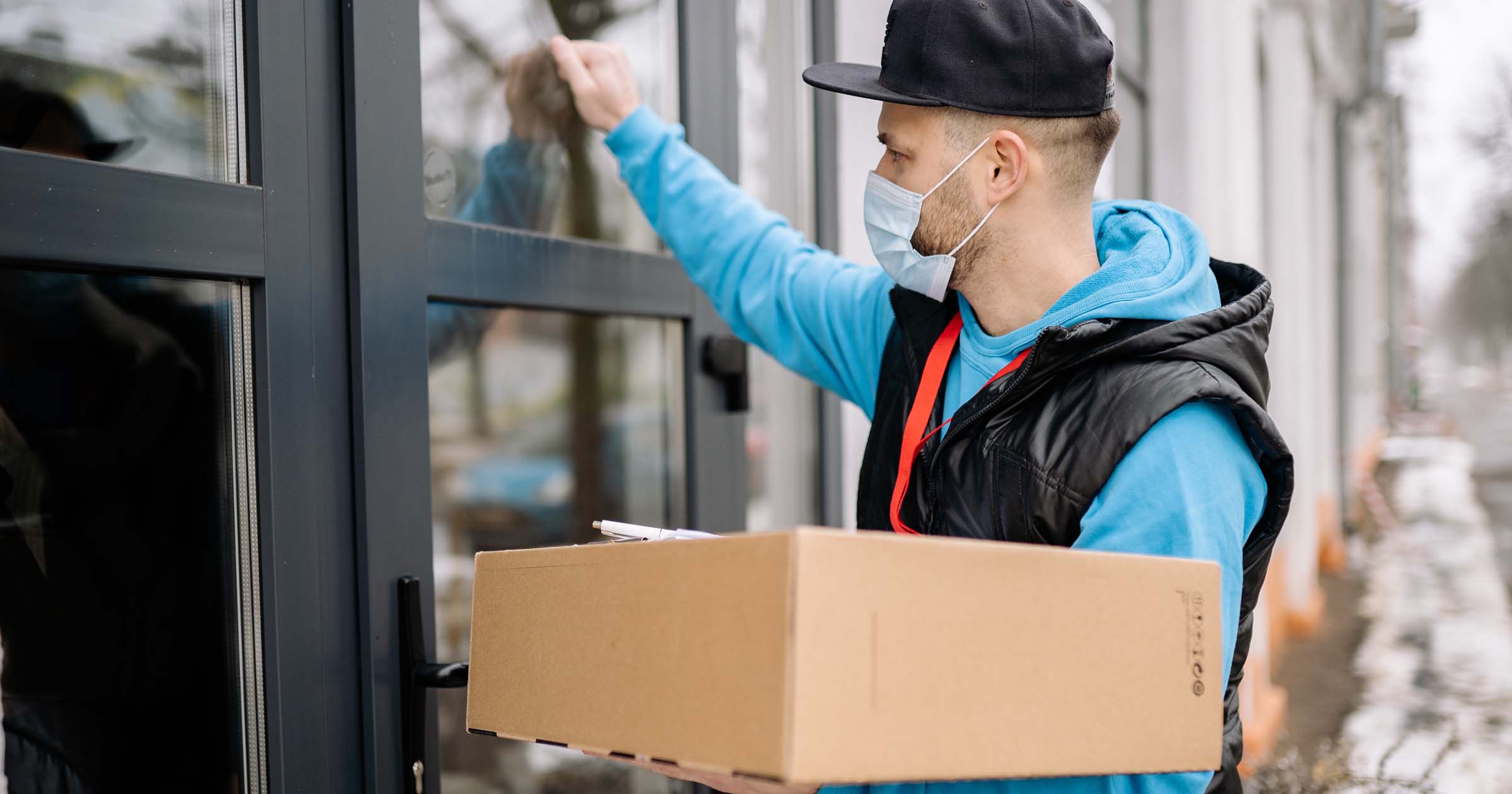How to Sell Door to Door: Tips for Door-To-Door Sales Teams
7 min read

Door-to-door sales had their heyday in the 1950s and ’60s when salesmen traveled from house to house in hopes of selling knives or another household gadget. It was a clever sales tactic that targeted housewives, who would be the only ones home, to make a major purchasing decision while their husbands were at work. But in 2022, door-to-door sales are less common, and many Americans are still social distancing. So sales teams shouldn’t expect an easy sale.
Sales teams need to perfect their sales pitch to improve their chances of making a sale. They’ll also need to implement smart tactics that mitigate the impact of homeowners ignoring the doorbell. In this article, we’ll cover door-to-door sales tips for both individual salespeople and businesses to help you increase sales.
Jump to the section that you’re most interested in:
- Door-To-Door Sales Tips (For Salespeople)
- Door-To-Door Sales Tips (For Businesses)
- FAQs About Door-To-Door Sales
Door-To-Door Sales Tips (For Salespeople)
The best door-to-door salespeople know how to find demand and make an effective sales pitch. This means knowing where to go and how to get there, understanding the ins and outs of the product, and recognizing when it’s time to walk away.
Look for a demand
It’s impossible to predict when knocking on a door will lead to a big sale. But you can increase your odds of success by focusing your sales efforts in areas with higher demand. You can do this by creating a customer persona to help you identify your most-likely customers.
Let’s say you want to identify neighborhoods to target sales efforts for solar panels. Start narrowing the sales area by eliminating neighborhoods with a high concentration of apartment complexes and other rental properties since renters are unlikely to invest in green initiatives for properties they don’t own. And since “solar adopters generally skew towards higher incomes,” you may want to focus sales efforts in high-earning neighborhoods.
Understand your product
Understanding the product you’re trying to sell helps you build confidence in your sales pitch. And the more confident you are, the more likely customers are to trust your guidance toward making a purchase. Without their own product knowledge to rely on, potential customers rely on the trustworthiness of the door-to-door salesman when deciding whether or not to buy.
A great way to build confidence is by using the product yourself before you knock on any doors. This firsthand experience will help you learn how the product works from a user standpoint and make it easier to answer customer questions.
Understand your sales pitch
A good sales pitch starts with a good first impression. Start by making an introduction before gently guiding the customer toward a sale. Preparing your talking points ahead of time provides you with a roadmap to lead the conversation. It also makes it easier to practice your pitch, and the more you practice, the more natural your conversations with customers will feel.
A few talking points you’ll want to prepare include:
- Product details, like the price tag and if it comes with a warranty
- How the product can address customer pain points
- Why the product or service is a better buy than what the competition offers
Plan your route
A good sales route helps you cover more ground and increase the frequency of customer conversations. To plan the route, consider factors that impact the sales day, like the time it takes to make your pitch. Other details to consider include whether you’ll walk or drive, the travel time between each destination and whether the route is located in a rural area or somewhere more urban.
Traditionally, planning a route meant noting these details and using a physical map to chart a path with pen and paper. Fortunately, a sales route planner makes routing easier by automating the process.
Know when to walk away
Even if your sales pitch is perfect, not everyone you talk to will become a customer. And if an individual isn’t going to make a purchase, there’s no point in spending a lot of time trying to change their mind. While you shouldn’t give up on a sale too easily, the more time you spend in conversations that don’t result in a sale, the less opportunity you’ll have with other potential customers. To make the best use of your time, you need to learn how to identify cues that indicate which conversations will end without a sale.
A few signs it’s time to walk away from a sale include:
- The prospective customer simply doesn’t have a need for the product
- The potential buyer remains skeptical of the product’s ability to deliver what it promises
- The prospect focuses on the price tag or tries to negotiate the price
Door-To-Door Sales Tips (For Businesses)
To grow from a small sales team to a successful field sales organization, you’ll need to hire new sales representatives and provide training to set the team up for success. Then you can implement an incentive structure, assigning sales regions to team members, and optimize routing with software.
Hire and train the right people
A larger sales team means more interactions with potential customers and increased opportunities for sales. Unfortunately, sales professionals frequently face rejection, making sales jobs difficult and increasing the chances of turnover. If you aren’t hiring the right people for your sales team, the cost of high turnover will quickly eat into your profits.
During interviews, ask individuals questions, like why they’re interested in working with your organization or where they see themselves in five years. Candidates who express interest in growth opportunities with your company are much less likely to contribute to a turnover problem than a candidate who just wants to “get their foot in the door.”
Develop a pitch
The best way to prepare your sales team so they feel confident when talking to customers is by developing a sales pitch. But it’s important to make sure conversations still feel natural. Customers won’t feel compelled to buy if a salesperson is reciting a sales script. Instead, compile talking points and coach your salespeople on different sales strategies.
A good list of talking points will include general sales pitch information like product features and pricing. It will also include guidelines to help salespeople lead conversations. This might include how much time they should spend on introductions or what type of language you want salespeople to use when talking about your products.
Create an incentive structure
Incentives motivate employees to perform at their highest level. According to McKinsey, “financial incentives can help drive and sustain a rapid performance improvement.” This means that implementing an incentive structure for your business does more than just boost sales. A good incentive program will encourage your sales reps to continuously improve their performance each day.
McKinsey also offers advice on creating an incentive structure, explaining that the best programs do a few things to help motivate team members:
- Encourage team members to outperform rather than just meet performance expectations, like offering a gift card to the salesperson that increases personal sales the most each month.
- Assess performance metrics that aren’t solely tied to financials, like encouraging salespeople to follow up and build relationships with loyal customers by offering an incentive when they earn referral business.
- Connect individual incentive structures to the company’s overall goals, like offering a financial bonus to the salesperson who has the largest upsell each month.
Assign territories to salespeople
An effective sales team will give equal attention to all potential customers. But teams should be careful not to over-service a neighborhood, which could lead to homeowners feeling pressured by a large presence of salespeople. Defining and assigning territories helps to balance sales opportunities. This means every sales territory gets equal attention, and every member of your sales team has equal opportunities to succeed.
In door-to-door sales, it’s common for businesses to divide sales territories by geography, relying on distinctions like zip codes, neighborhood boundaries, or even state lines. This type of assignment limits the distance salespeople will need to travel, making it easier to plan individual sales routes and organize canvassing efforts.
Optimize route planning

Accounting for all of the factors involved in routing is overwhelming, making planning incredibly difficult. There are countless possible routes, and finding the best one is nearly impossible. This is such a big problem in field sales that its earned its own name: the traveling salesman problem.
The larger your team is, the more factors you’ll need to consider when creating a route and the more complex your traveling salesman problem becomes. Fortunately, there’s a simple solution to this problem: implement software to automate the process. Using a planning tool like OptimoRoute, you can improve the efficiency of your routes, so your sales team spends less time traveling and more time making sales pitches.
All you have to do is provide the system with details like what time salespeople will start knocking on doors, how you divide sales territories, and the average length of a conversation with a customer. A few clicks later, OptimoRoute will automatically plan sales routes based on your guidelines. This makes it easy to coordinate the movements of every individual member of your sales team to maximize efficiency.
Learn more about how OptimoRoute can help improve sales with automated planning or sign up for a free 30-day trial to experience the difference it can make for your sales team firsthand.
FAQs About Door-To-Door Sales
In this section, we’ll answer three commonly asked questions about door-to-door sales.
What is the best time to sell door to door?
The best time for door-to-door sales depends on the customer demographic for the product being sold. If the target audience for a product is adults in their 40s who work 9-5 jobs, then weekends are the best time for sales because customers are more likely to be home.
What is the easiest thing to sell door to door?
No product sells itself. The performance of an individual salesperson relies on their own sales skills. However, salespeople can work to improve their pitching skills to increase their sales by finding a mentor or attending sales trainings to learn new sales techniques.
Does route optimization help with door-to-door sales?
Route optimization increases efficiency, so sales teams are able to cover more ground. This means salespeople can pitch to more customers, which means they have more opportunities to make a sale.
Try OptimoRoute™ for Free
No installation or credit card required


